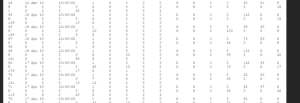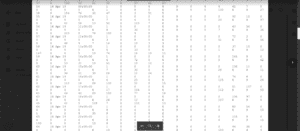For our final project, Kevin Dai and I created robots to simulate the behavior of baby ducklings. The main idea of the project was to take two robots and have them imprint on an object which they would then follow on their own.
The materials we used for this project consisted of two kitten bots, and 2 ultrasonic sensors per robot. We used arduino ultrasonic sensors because they were small and thus allowed us to place them in the front of the robot.
We started by adding the ultrasonics to the front of the robot by attaching it to a plate. We initially placed the ultrasonics closer than they currently are. However, after some testing, we realized that by placing the ultrasonic sensors farther apart, we could prevent the robots from veering off as often as the robot has more available distance to turn the farther apart the sensors are.
After building the robots, we worked on the algorithm. Although we had code that did effectively what we wanted to do, we noticed that the past code would frequently have the robots fall out of line. After some experimenting, we realized that we not only had to check the values of the ultrasonics alone, but also, we had to check their relative distances. This way, if one was greater than another, we could correct the orientation of the robot before it would turn to far. We also added a minimum value which helped further the similarities between our robots and ducklings as ducklings also keep some distance between themselves.
Overall, I really enjoyed working on this project for the final because, although it was difficult to figure out how to best implement the code and have the bots run fluidly and continuously, to actually represent an animal as opposed to a robot, it was rewarding to see them run smoothly and mimic the behavior of actual ducklings. I also enjoyed demonstrating the robots at the IMA fair at the end of the year and it seemed that many people enjoyed having the duckling imprint on them as well.
If you would like to read more about the research and an even more detailed review of every step of the process, please read this paper written by Kevin and I: https://docs.google.com/document/d/1uyzA88VI6YVixFFd-j42QGfMkUiLtyTW35_XHtpDS_M/edit?usp=sharing
Finally, here are the bots in action:
https://photos.app.goo.gl/2eVPLU6YpXKUWm3o9

